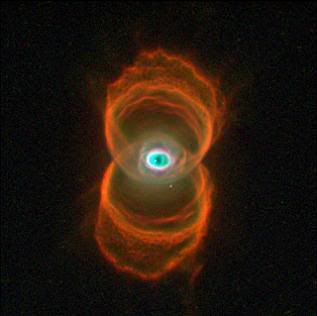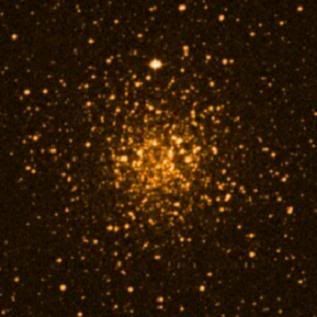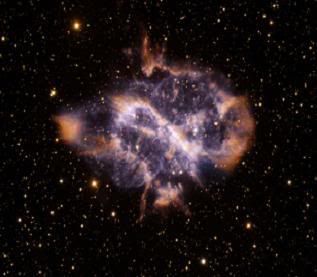Post by glactus on Feb 17, 2008 7:12:58 GMT

Musca is a southern hemisphere constellation introduced by Johann Bayer in 1603. He called it Apis, "The Bee" because of its similar name with the constellation Apus, this name didn't stick. The full name is actually Musca Australis vel Indica, The Southern or Indian Fly, which distinguished it from the now obsolete Musca Borealis, the Northern Fly. During the early part of the Age of Exploration, European sailors pictured the stars of Musca in the shape of a bee.
Notable stars:
Alpha Muscae
Alpha Muscae is a 2.7 magnitude, spectrum B-3-IV star at a computed distance of about 430 light years, with an actual luminosity of about 1200 times that of the sun.
Beta Muscae
Beta Muscae not only appears to be close to its slightly brighter companion Alpha Muscae, but is in fact just a few light years away. Beta Muscae is a blue rapid visual binary; the companion circles the primary every 383.12 years. Magnitude is 3.04 and distance from earth is 311 light years.
Gamma Muscae
Gamma Muscae is a hot, blue class B star of magnitude 3.84. The distance from Earth is 324 light years.
Delta Muscae
Delta Muscae is a blueish star with a magnitude of 3.61. Distance from Earth is 9.8 light years
Notable objects:

MyCn 18 -The hourglass nebula
The beautiful hourglass nebula is a tenuous cloud of gas formed by a Sun-like star undergoing 'death tremors' at the end of its life. The star had difficulty in getting enough fuel to keep up its nuclear furnace, and has now shed off some of its surface material in two directions. It has a unique ring formation which has long baffled astronomers. However, a close examination reveals several forces at work to create this beautiful cosmic object. Distance from Earth is 8,000 light years and magnitude is 13.0

NGC 4833
NGC 4833 Is a southern globular cluster discovered by Abbe Lacaille during his 1751-1752 journey to South Africa. Initially you should be able to locate this bright globular set in a fine star field with your finderscope. Some stars can be resolved with 40x, and many more with 120x. Look for the bright field star near the edge of the group. Distance from Earth is 24,200 light years and magnitude is 7.4

NGC 5189
NGC 5189 is also called the "Spiral Nebula" because visually its S-shape reminds of a barred spiral galaxy. It shows a peculiar, very complex structure with filaments that remind of the Crab Nebula ( M 1 ). Dreyer calls it "a very strange nebula". Distance from earth is an estimated 3000 light years, with magnitude varying from 13.5 to 14.1.

The hourglass
credits:
Musca map: Wikipedia
en.wikipedia.org/wiki/Musca
image: Hourglass nebula: oposite
oposite.stsci.edu/ftp/pubinfo/tiff/1997/pn/
image: NGC 4833 mporzio
www.mporzio.astro.it/~marco/gc/ima/dss_ngc4833.gif
image: NGC 5189: Spacedaily.com
www.spacedaily.com/images/galaxy-ngc-5189-desk-1024.


